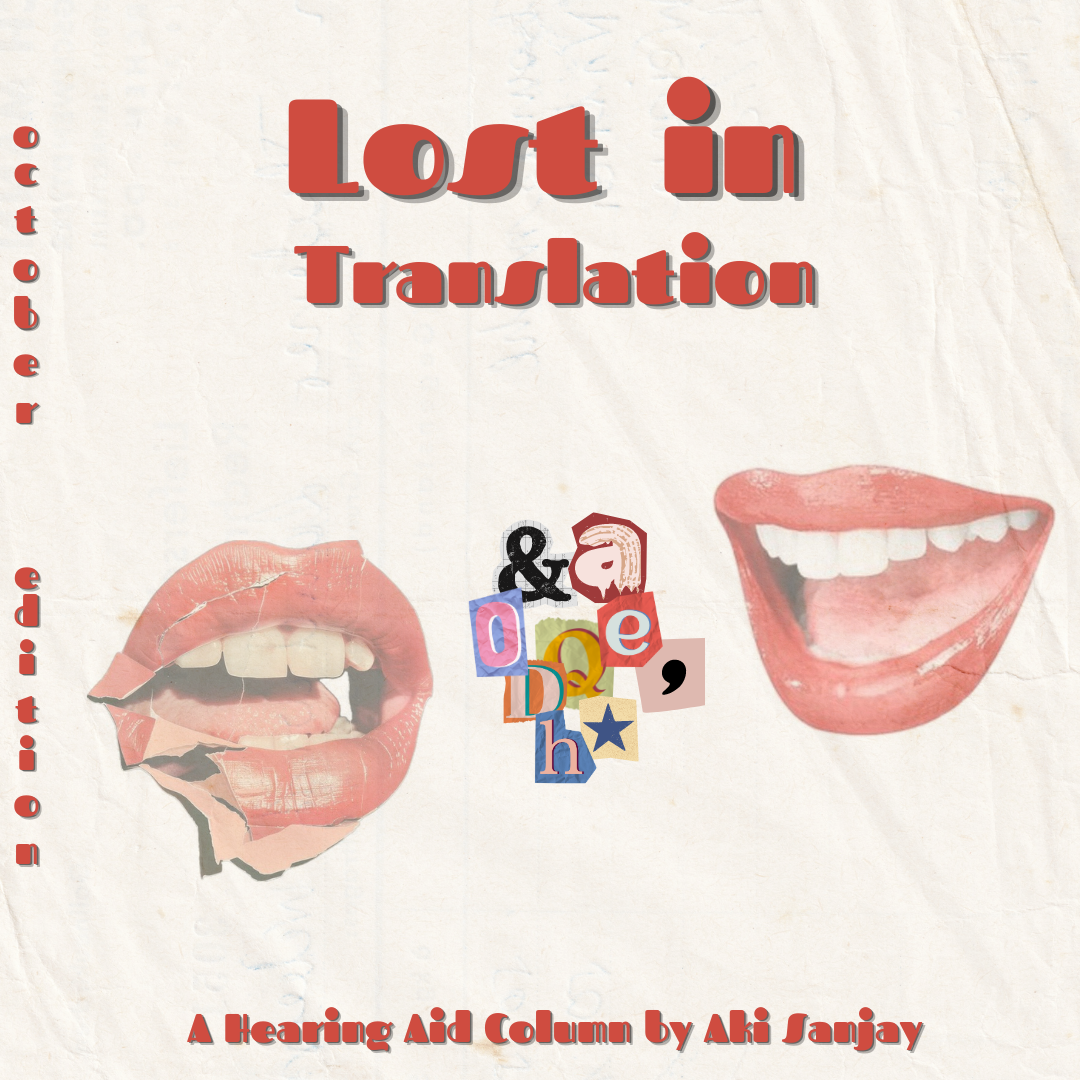Lost in Translation: Scottish Gáidhlig
An exploration of traditional Gáidhlig music
By Aki Sanjay
If you’re ever on a train in Scotland, keep a close eye out the windows for the blue panels signposted at each station. You’ll see the ScotRail logo - perhaps a marker of British Rail as well - and you’ll see the names of the station. At most stations, however, this name will probably be written out in two languages: Leuchars and Luacharas, for instance.
Scottish Gaelic, or Gáidhlig, is the oldest surviving language indigenous to Scotland. Part of the Celtic family of languages, it was introduced into the country from Ireland over 1500 years ago, centuries before the Anglicisation of Scotland. Until the 14th century, it was the primary language not only of Scotland but of the Scottish courts - only regionally separated areas, such as Caithness and the Northern Isles, did not adopt Gáidhlig. It lost some ground with the rise of the Scots language in the southeast, yet it was only in the early 16th century that Gáidhlig saw a sharp decline in its use, when the language was typecast as a form of barbarity rampant in the Highlands. The growing Anglicisation of Scotland further diminished the language, with Scottish academics encouraged to write, speak, and teach in English instead. The threat of extinction loomed over the traditional tongue - and yet, to this day, Gáidhlig remains a distinct and essential part of Scottish identity.
Recent efforts to promote the use and teaching of Gáidhlig have centred around cultural education, particularly in the arts. Traditional music has taken a front seat in modern celebrations of Scottish identity at both a regional and national level, a callback to the musical roots of the Gaels. Gáidhilg music has historically been a form of storytelling, narrating folklore, folklife, and the experiences of everyday people; there are tunes for every cycle, movement, and moment of life. Songs accompanied everyday routine, day or night - whether washing dishes, waulking (beating) rough tweed, tending to farms, or, famously, dancing in the military-style marches and dances of a céilidh.
Over the past thirty years, a revitalised interest in Gáidhlig music can be attributed to both an increased effort to teach Gáidhlig in Scottish schools and the presence of Gáidhlig-specific choirs. Cóisir Dhún Éideann, an Edinburgh-based choir, is one of Scotland’s longest running Gáidhlig choirs, formed at the turn of the 20th century. Conductor Niall Tracey speaks to me about the choir and its goals: “At the moment,” he shares, “we are focusing on traditional songs and some of the elements of language that are kind of neglected.” As Cóisir Dhún Éideann does not require a prior knowledge of Gáidhlig, not every member of the choir knows the language. Tracey wants to ensure they are taught properly to further bridge music and language - hopefully encouraging new interest in Gáidhlig.
Tracey does believe Scottish culture, and traditional language specifically, has grown stronger in recent years. He tells me about the National Mód, a yearly celebration of Gáidhlig music and culture. The focus on music in the Mód, Tracey says, “carried Gáidhlig through a pretty dark time - it’s done its bit to preserve [Gáidhlig].” Although music-centric celebrations such as the Mód are beginning to decline in popularity, especially due to a decreased number of choral singers post-pandemic, Tracey does not believe Gáidhlig culture itself is declining. Rather, there are renewed areas of cultural celebration outside music alone.
And yet, Gáidhlig music still remains popular, with younger Scottish musicians embracing the language. Most Gáidhlig-speaking artists today tend to cover traditional songs, putting new spins on tunes that have serenaded Scotland for centuries. The trio Sian, featuring Gáidhlig singers Ceitlin Lilidh, Eilidh Cormark, and Ellen MacDonald alongside instrumentalist Innes White, are committed to sharing a deep love for traditional music through innovative harmonies and arrangements. Their debut album Sian was released in 2020, hailed by The National as “both ancient and modern, and never less than remarkable.” Donnie Munro, former lead singer of the band Runrig, is also a native Gáidhlig speaker. Runrig released several songs in Gáidhlig, including ‘Dùisg Mo Rùn’, ‘Gamhna Gealla’, and ‘An Ubhal As Airde’. Munro is currently is a director at Sabhal Mòr Ostaig, a center for Gáidhlig culture in the Isle of Skye.
Other branches of the Celtic language family have recently entered the popular music scene to warm reception. Irish singer Hozier, best known for his 2013 release ‘Take Me to Church’, often sings in Irish Gaelic, or Gaeilge. His songs ‘De Selby (Part One)’ and ‘To Someone from a Warm Climate (Uiscefhuarithe)’, both from his recent record Unreal, Unearth, include lyrics in Gaelige. Hozier has been vocal about his Irish heritage, having grown up in rural, seaside Ireland. Although he is not a fluent native Gaeilge speaker, as he shared with Hotpress, he loves to include Gaeilge in his music.
Gáidhlig music has seen a long history, a constant presence in ever-changing landscapes. A beloved form of storytelling, it is carried on today through the work of local choirs, international musicians, and rising singers alike, all committed to the preservation of Scotland’s tradition and identity. With new generations of Gáidhlig speakers and young musicians across the country, Gáidhlig music has a promising future lying ahead.

